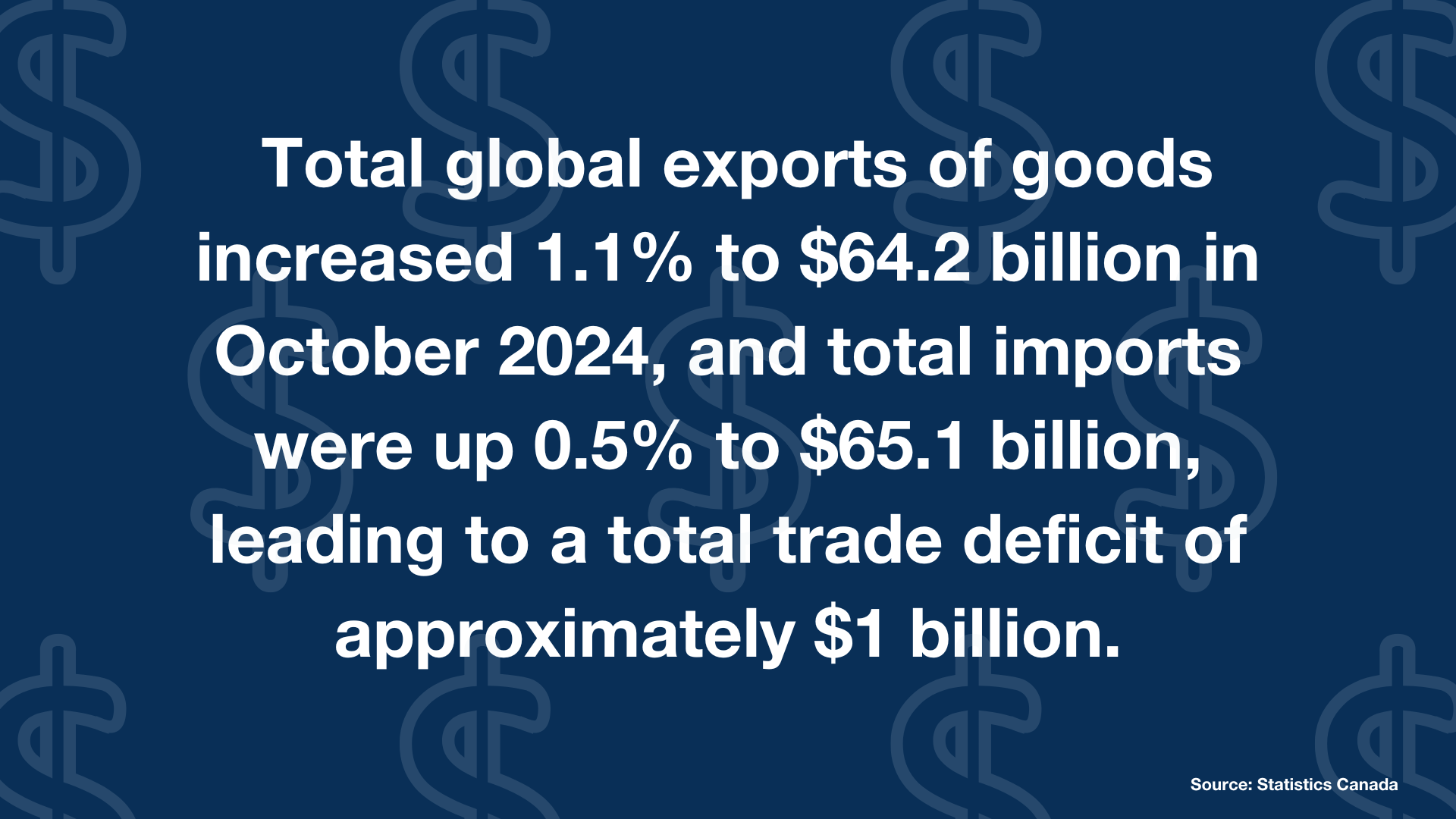Canada’s Trade Deficit and U.S. Tariffs
Reading time: 4 minutes
President Donald Trump’s threat of imposing tariffs brings up another precarious position that Canada is facing, its overall trade deficit. Canada exports more goods to the U.S. than it imports, known as a trade surplus. However, on a global scale, Canada imports more goods than it exports, known as a trade deficit.
Trump wants to bring manufacturing back to the U.S. rather than import, and he plans to accomplish this through the use of tariffs. Tariffs will make imported goods more expensive, therefore giving U.S. goods an advantage. If he imposes a tariff on Canada, as promised, it could harm businesses that export to our largest trading partner.
Second, having a trade deficit can be a sign of an unhealthy economy, it suggests that we use more resources than we produce. As a result, it can lead to higher debt levels and increased deficits, both of which we have seen in Canada.
As Canadians, We Have Options
Given the reliance of many Canadian businesses on exports to the United States, the implementation of tariffs would significantly impede this trade route. The resulting decline in exporter profits would have a detrimental impact on the wider economy.
Canadians will also be looking to elect a new leader in 2025, one that can negotiate and come to an understanding with Trump. However, if the tariffs are implemented, Canada will have to become much more efficient and increase its production capacity for economic stability. This could come in the form of our energy and mining sector, which has been stifled in the past decade.
The profits from these industries will help offset the losses incurred by the U.S. tariffs. A thriving energy sector will also increase foreign investment, local service industries, exports to other countries, and provide affordable energy to SMEs.
While environmental policy is important for all political parties to retain Canada’s national parks and landscapes, thriving industrial sectors will bring balance to the housing market and cost of living. It also encourages entrepreneurship through more capital available for investment.
A stronger economy can bring higher wages, efficient social infrastructure, and affordable housing. Without these financial pressures, individuals will be able to focus more on environmental sustainability. It also encourages entrepreneurship through more capital available for investment.
Strategies for SMEs
One approach to be considered is market diversification. By reducing dependence on U.S. markets, SMEs can mitigate the impact of tariffs. Trade agreements such as the Comprehensive Economic and Trade Agreement (CETA) with Europe and the Comprehensive and Progressive Agreement for Trans-Pacific Partnership (CPTPP) offer opportunities to expand into new markets. Government trade programs and export development initiatives can support SMEs in this transition.
Additionally, strengthening domestic supply chains can reduce reliance on cross-border trade and minimize exposure to tariff-related disruptions. By sourcing inputs locally, businesses can enhance supply chain resilience and maintain operational efficiency. Also known as onshoring, depending on suppliers within our border strengthens our economy as a whole by spending money in our local markets.
Collaboration with industry associations and policymakers is equally important. SMEs can advocate for sector-specific exemptions or relief measures through collective lobbying efforts.
Another strategy is financial hedging against currency volatility. SMEs can use forward contracts and other financial instruments to lock in favourable exchange rates, shielding themselves from the depreciating Canadian dollar. Furthermore, leveraging government programs such as Export Development Canada’s credit facilities and grants can provide financial support during periods of economic uncertainty. These programs can help SMEs maintain liquidity, invest in growth opportunities, and adapt to changing market conditions.
Peer Advisory Groups Save Businesses
As Canadian businesses deal with the threat of tariffs and an uncertain economy, TEC Canada becomes an important partner. TEC’s confidential peer-advisory groups help companies build resilience and grow strategically. During the COVID-19 pandemic, TEC members found great value in support and shared knowledge within their groups. These benefits are equally important today as businesses face challenges from possible trade disruptions with the U.S.
Monthly, TEC members discuss their most pressing challenges and opportunities, receive expert advice, and personalized coaching, helping them create solid backup plans while seizing new opportunities. This guidance positions their companies for long-term success.
As we anticipate the introduction of tariffs, it is imperative for Canadian businesses to proactively redefine their strategic landscapes. Whether it’s through diversifying markets, strengthening domestic supply chains, or leveraging financial instruments, the resources and community within TEC Canada provides innovative solutions and strategic insight.
Join TEC Canada today and be part of a network of leaders who value collaboration, growth, and shared success.
Together, we can turn these challenges into stepping stones for a prosperous future. Connect with us to learn how to improve your leadership skills. Together, we can help your business grow during these changing times.




